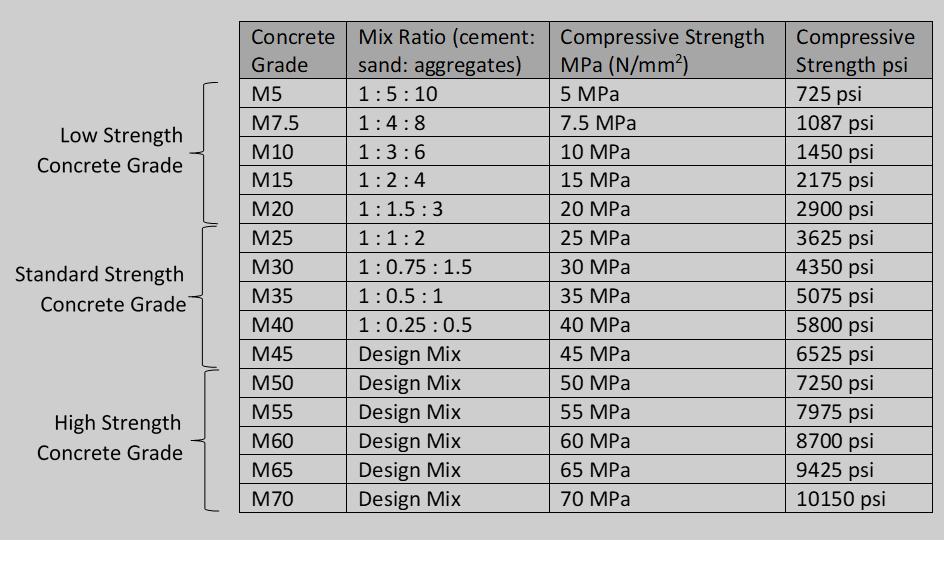
Topic : Concrete Grades
What are the different grades of concrete?
It's important to know that there are different qualities of concrete. Depending on whether you are pouring concrete for a floor, a foundation, a wall or a pillar, you have to choose the right type to make sure it meets your needs. The quality of concrete is classed by a system of grades called “M” followed by a number. (M5, M7.5, M10, M15, etc.)
In this appellation, “M” means the mix of the concrete. The number followed is a bit more complicated: it is the compressive strength of the concrete mix in Newton per mm2 after 28 days of drying. In other terms, after 28 days, the concrete compression is tested to determine the resistance. If the result is 15 Newton per mm2 the concrete is a M15 grade. If it resists to 55 Newton per mm2 the concrete is a M55 grade. Higher the number, the more resistance it has.
More accurately, a Newton per mm2 (N/mm2) equals a megapascal (MPa), which also equals to 145 psi pressure on a concrete block. Concretely, if a block breaks at a pressure test of 6525 psi, you have to divide it by 145 to find the MPa. In this case, 6525/145=45 which means the concrete is a M45 grade.
The strength of a concrete mix is determined according to the mix ratio between cement, sand and aggregates. The most common grade of concrete for a floor is a standard grade which is between M25 and M45.
See more examples in the table below:

© Plate 2000 2019
